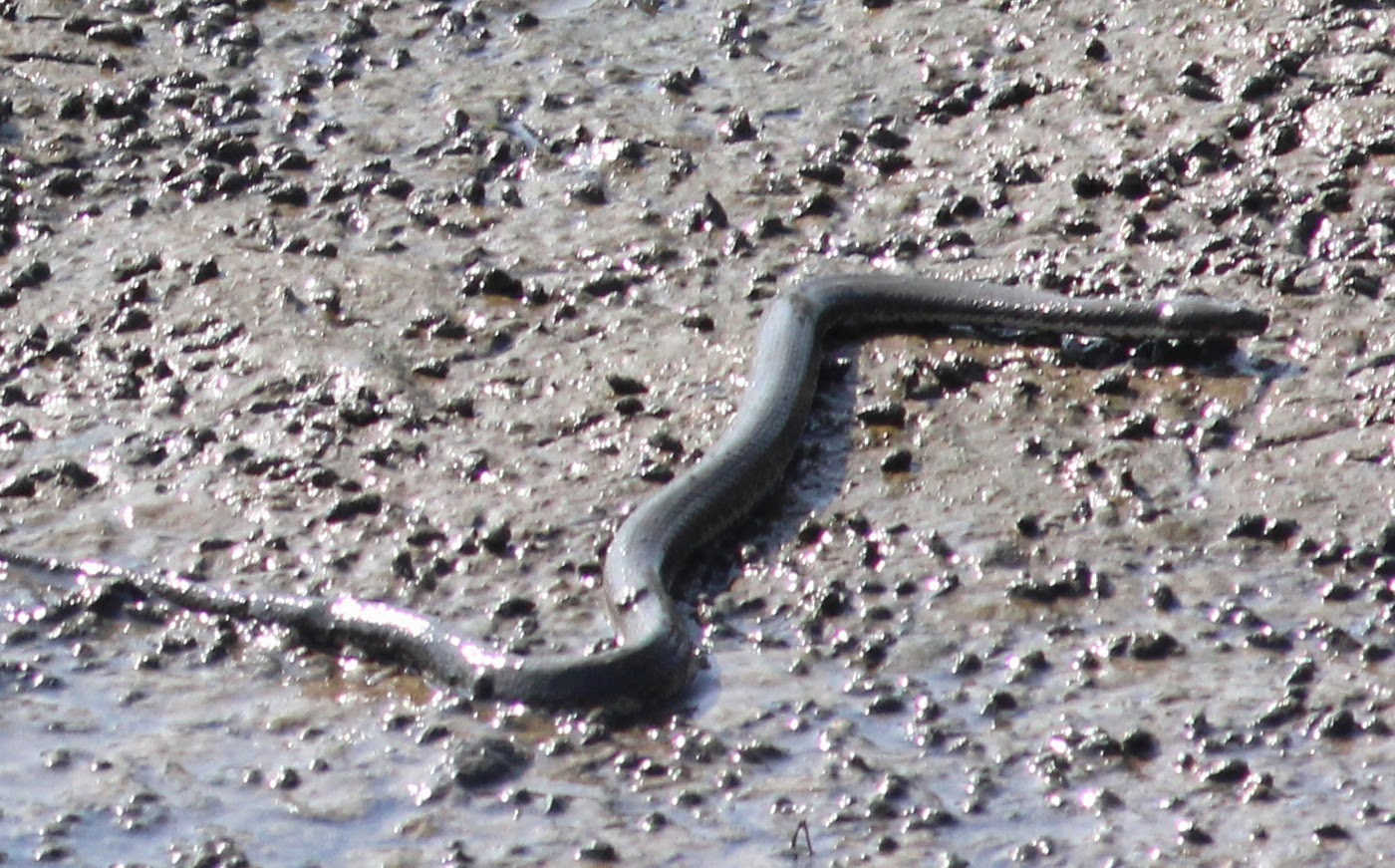Here is an Eastern Marsh Harrier (a female i believe) which flew above my head as i was walking to the mudflats. It circled a few times before it went off towards the direction of Bukit Mertajam. This was what some birders would termed it as a "chance sighting".
 |
| Barn Swallow |
Saw this swallow taking a sip of sea water.
A group of Great Egrets and Little Egrets
Was hoping to see a Chinese Egret but it turns out that they were all just Great Egrets and Little Egrets. From the above photo the bird on the right looks like an Intermediate Egret.
The tide was rising fast and what was left was just a patch of mudflat for the pond herons to share with the egrets.
I have another opportunity to watch the waders a few days later, so off i went again to the place. This time the tide was way down and i could only photographed the waders from a distance.
As you can see there were only pockets of waders left as most of them have probably gone back to their breeding grounds. Here you could also see some of the Bar-Tailed Godwits were in their breeding plumage. Also around in great numbers were the Great Knots - the birds which have a black patch on their breast as described by Dave Bakewell in his recent blog posting.
 |
| Javan Pond Heron |
Here you can see its long head plumes. Adult males were reported to have more of these plumes than females.
 |
| Chinese Pond Heron |
This Little Egret was probably mitigating some land ownership dispute between the Javan and Chinese Pond Herons.
 |
| Striated/Little Heron |
As i was watching the waders out there this little heron was passing slowly in front of me. This must be a young adult as its back plumes have yet to form fully. Nevertheless its plumage colors really blended well with the mudflats.
As usual the Common Greenshanks came quite close instead of wading at the edge of the beach.
A couple of Great Knots in flight with other waders. The waders would often shift their feeding sites as i have observed at this location.
Can you spot a lone Black-Tailed Godwit here?
Here it is !
Waders landing on the other side of the mudflats.
A kettle of Brown Headed Gulls followed the routine.
Saw at least 30 of them this time. Unlike the flight patterns of Plain-Pouched Hornbills or the Canadian Geese (as seen from Nat Geo), in the flight of the Brown-Headed Gulls i have noticed that it was always in straight lines and that there was a bird in front to lead and another bird would fly further behind from the main flock - probably acted as a "sweeper". Overall it was a wonderful experience to see these gulls in flight.






































































